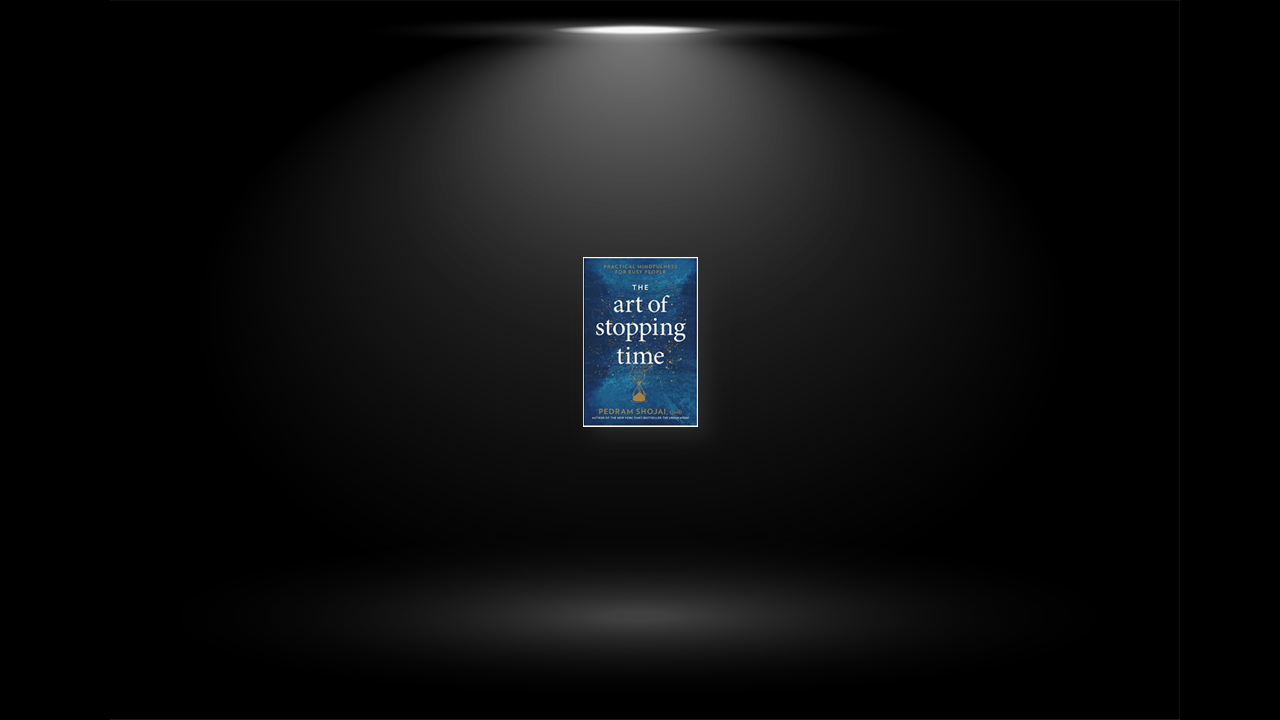Day 1: Assembling Your Life Garden
Today we look at life through the filter of a natural metaphor. Imagine your life is a garden. You have limited water and need to leave space for each plant to flourish. Some may be bigger and more important to you than others. Some you may not even like but are obliged to keep there.
Think about what’s important to you. What would make it into your Life Garden? Family? Career? Health? Relationships? Music? What’s important in your life?
List these items and then imagine how much energy needs to go into the sustained growth of each. Think of your energy as the water you need to nourish and grow each plant. It comes in the currency of time, effort, willpower, and attention. If you were to adequately nourish each plant, what would it take?
Some may require far more time and energy than others. Make an allowance for that. New cars cost money. If you want one, you’ll have to either make more (which means more water in the career area) or take away some funds from your family or elsewhere. Take a cold, hard look at what you say you value and then reconcile that against how much water (time, energy, attention, money, focus) you have to keep that plant happy and healthy. Can you manage to keep certain plants alive while directing the flow of your water to certain others for the time being?
Get realistic about how many plants you need to water and cultivate. You have room for five to ten plants and that’s it. Guard against any new ones that may be introduced into your garden, and pull up the ones that are sucking valuable resources away from your most important plants. Consider these weeds. It takes focus and dedication, but this is critically important. By saying yes to something new, you’re effectively saying no to your existing plants.
Day 2: Time for Gratitude
Today we pull over and take some time to be grateful for what we have. Gratitude is good medicine and is always time well spent. It helps relieve stress and build positive energy, and it gives us great perspective on life.
When’s the last time you did this? Are you hardwired to be grateful, or is it something you have to remind yourself about? Practicing gratitude is healthy. It helps paint a worldview of optimism and hope. People who practice it are consistently happier—we’ve seen this in multiple studies.
What tends to happen with people who are depressed and stuck is a phenomenon called stacking. This is when something bad happens to us and we take that isolated event and attach it to a series of other “bad” isolated events and create a pessimistic narrative.
Let’s say you stub your toe and drop your phone. People who stack go to a place where “this always happens to me; I have such bad luck; I remember when I tripped in college and was embarrassed” and on and on. A bill could come in and remind you of all of your financial woes, or something as trivial as your favorite team losing could trigger your personal narrative of how you married the wrong person.
It doesn’t make sense, but it’s what we tend to do. It’s a downward spiral that drags us into a “my life sucks” narrative that doesn’t serve us. It also makes us less fun to be around.
Gratitude is a wonderful antidote for this tendency. Today let’s practice this. Grab a piece of paper or pick up your phone and simply start making a list of all the things you’re grateful for. It could be your kids, your cat, your accomplishments, a tasty lunch you had recently, or the clouds in the sky. Just keep writing.
Day 3: Nature
Today’s lesson is simple: Step outside and learn from the ultimate teacher. Nature is our guiding light when it comes to cycles and rhythms. She functions under a perfect ebb and flow of counterbalancing principles. Heat and cold balance with light and dark. Growth and decay are fully realized in cycles of the year, as are birth and death. Nature has all the wisdom you need, packed into plain sight.
We’ve simply forgotten to look. Today’s practice is to step outside and spend some quiet time in nature. Even if a public park or back lawn of an office park is all you can access, I am positive that there is going to be some semblance of the natural world available to you today if you open your eyes and look for it. Go there.
Sit in a comfortable spot and start to breathe deeply to your lower abdomen. Relax into your breathing and sink into the sounds all around you. Feel the wind on your face and maybe take off your shoes and wiggle your toes into the dirt. If you have the luxury to fully immerse, get into some clay or bury your body at the beach. Break down the wall and allow for nature’s majesty to touch you and surround your senses.
Trees can get to hundreds of years in age, but the pebbles below your feet are millions of years old. Where did they come from? Were they part of some large rock aeons ago? How did they get here?
Now observe the dirt under your feet. Long ago, certain fungal elements evolved to break down rock and create dirt. With the coming of bacteria, Protozoa, nematodes, and multiple other life-forms, the dirt started to become soil. This allowed for certain life-forms to take inorganic materials and make them available to the plant kingdom, which then took off and spread across the planet. Those plants adapted to drink light and create energy from the sun, trapping energy in carbohydrate bonds. This became the fuel for certain animals to eat, and fast-forward several million years, here you are.
Day 4: E-Mail Time
E-mail has become an integral part of our lives. It became a powerful way of communicating, which quickly became the new norm for businesses all over the world. E-mail is great. You can attach files, pictures, and videos efficiently. You get people what they need and move on with your life.
So what’s the problem? Volume. We’ve become slaves to the inventions that were created to make life easier. Now we’re drowning in e-mails. Every store, car dealer, app company, and vitamin peddler is sending you e-mails almost daily. Spam has become an enormous issue that we all deal with, and it doesn’t seem to be going away.
Today we deal with this. It doesn’t make sense to look at your e-mail every time your phone or computer chimes. It distracts you from the task at hand and keeps you unfocused. What other people want you to look at isn’t going to get you through your day efficiently. In fact, every time you look away, you lose momentum and clarity in what you were doing.
Let’s set up some chunk time for you to check e-mail. Depending on the volume you deal with, set 30 to 60 minutes for e-mail in the late morning and another block toward the late afternoon. This is your dedicated e-mail time. The key is to get in, handle it, and get out. One way to do this is to run through all the messages in the morning block, handle anything that can be responded to in the first 5 minutes, star the important ones you need to get back to, and delete or mark as spam all the others. You’ll have another block later in the day to get to the longer ones if need be.
On that note, you need a good spam filter so the junk doesn’t even get put in your face. There are a number of good ways to do this, and you’ll have to find one that suits your unique needs. Make a habit of marking items you didn’t elect to receive as spam within your e-mail program. This teaches the software what not to send you and helps you keep your inbox clean. With spam out of your face, look at the key communications that deserve your time and start to back your way out of long e-mail chains that waste it.
Day 5: When to Lie Low
There’s a time to jam and a time to chill. A wise person can know where she stands and adjust her speed accordingly. We all have deadlines and eras in life when time is tight and compressed; if we know how to protect ourselves during these times, they can be filled with energy, excitement, and momentum. But we can’t stay in hyperdrive for long, and if we don’t learn how to turn it off, we can get burned out or burned up. That’s how our economy is set up—the constant grind. If you can work your way off that hamster wheel, you’ll find yourself in a much healthier position in life.
If you’re stuck in such a lifestyle, it is prudent to understand the ebb and flow of these rhythms and adjust your own velocity manually. This means knowing when to slow way down. You still may need to go through certain motions, but this lesson is about learning to identify the moments when you need to be redlining and the moments when you can—and should—intentionally take your foot off the gas.
Today let’s examine the bigger cycles of your busy life. Are you in a “push hard and get there” phase, or are you between deadlines? Are you required to leave it all on the court right now, or can you ease off the gas and replenish your reserves? Only you can determine this.
One thing to take into account is your current energy level. On a scale of 1 to 10 (10 being the highest energy), how much do you have right now? A score of 1 means you can hardly get out of bed and are totally depleted, and a 6 means you’re doing okay but certainly not feeling great. What’s your honest answer to this?
Now here’s the kicker: If you were to factor your willpower out of the equation, then what would your number be? You see, most of us are forcing energy out to keep up with the demands of our lives. We use our willpower to keep us in overdrive so we can get through, and our bodies, our minds, and our relationships are paying the price. What’s your honest number if you factor out willpower?
Now take that number and think about what you need to do for yourself to bring it up and feel better. When can you slow down? How would you do it?
Today take 30 minutes and simply only do what you feel like doing. This may turn into a nap, since most of us are usually exhausted. That’s fine. It’s a step in the right direction, which honors the spirit of today’s gong. From there, tonight start to think about what else you think would help bring balance to your life.


